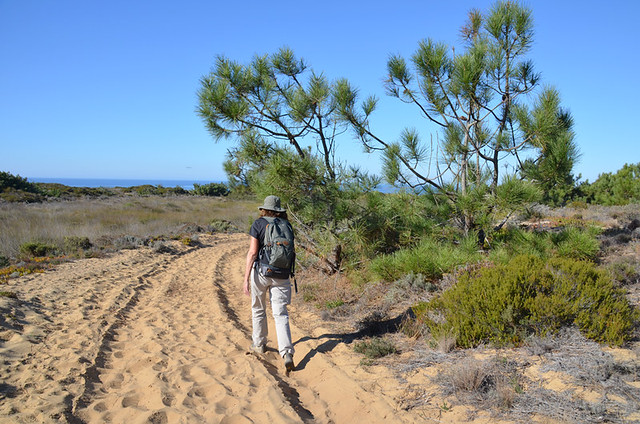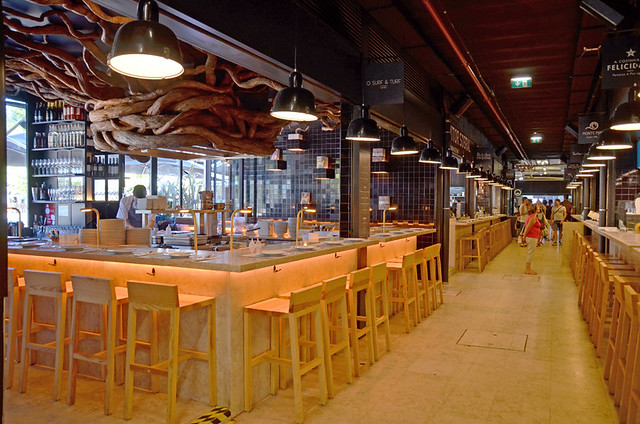Travel articles with titles like ‘15 reasons not to visit…‘ are usually designed to draw readers in. Often the objective is to employ reverse psychology. Lists usually include things designed to make readers want to visit, or do the things the list tells them not to do – ‘you really don’t want to visit the valley of the thousand golden palm trees… because I want it all to myself’ etc. One such article on Portuguese website Portugaldenorteaasul, 11 things tourists should never do in Portugal, hooked me in. After three years of getting to know Portugal, I wondered how these ‘things not to do’ would compare with our experiences.

Don’t forget to apply sun tan lotion
We’d go along with this advice 100%. Having lived in the perfect climate of the Canary Islands for 14 years, and holidayed in numerous places where the sun was fierce, we’ve still been caught out by the Portuguese sun. The latest was just last week when, with sun cream applied and wearing wide-brimmed hats, we both suffered slight sunstroke during a 14km walk. And this was in October. The Portuguese sun can be unforgiving.

Don’t forget to pack walking shoes
Rather than hiking, the advice was related to walking in hilly towns and cities where cobbles make up the surface underfoot, and also along soft, sandy country tracks. Again, it’s sound advice – cobbled streets are easy on the eye but hard on the feet, and even perilous if you’re not wearing the right footwear. As for those sandy paths, the route we follow through the cork forest next to us disintegrates as summer progresses, ending up as one, long, energy-draining sand dune which would leave the French Foreign Legion gasping.

Driving isn’t always the best way to explore
I agree and don’t agree with this one. We would have been scuppered without a car in many of the places we’ve spent time in over the last three years. Whilst putting together Slow Travel holidays we have to research public transport links, and many times the only viable option for anyone without a car in rural areas is to know a reliable local taxi number. On the other hand, we prefer to use trains to travel to Lisbon and other cities such as Porto and Coimbra. In the Minho recently we had to use the bus service to get us back to our car after five days of cycling in the opposite direction from where it was parked. It was cheap, comfortable, and relaxing. It’s horses for courses.

Don’t try to communicate in Spanish
We know this only too well from first-hand experience, as Spanish is our default language. Bizarrely, we resort to it anywhere we have to communicate in another language whether that’s Germany, Greece, or France. Don’t ask me why, it happens automatically. On our very first visit to Portugal we tried speaking Spanish in Porto as we figured it was a hell of a lot closer to Portuguese than English. We were soon put straight about that being a cultural faux pas, finding speaking English went down far, far better. Knowing Spanish does make it harder though, as many words are virtually the same in both languages. We’re constantly accidentally throwing in Spanish words instead of Portuguese ones.

Don’t be afraid of trying unfamiliar things
I think this is true of most places; locals respond well when you prove yourself open to trying something new, especially when it comes to food. But I have to agree with the article when it says the Portuguese are especially proud of their food and wine. We’ve found we get more culinary tips and ‘additional information’ in Portugal’s restaurants than in those of most other destinations we visit.

Never be complacent in the water
Another which doesn’t just apply to Portugal. Having grown up on an island in the west of Scotland I’ve had a healthy respect for the sea since a young age. During our time in the north of Tenerife we read about far too many deaths in the surrounding seas annually because of visitors failing to appreciate the power of the Atlantic. It’s a dangerous mistake to underestimate the force of the sea… anywhere.

Don’t ignore the architecture
Again, this one applies in any historic centre, so not specifically a Portuguese thing.

Don’t dine at tourist traps
Another sound piece of advice that generally applies across the travel board. However, I don’t fully buy into the whole ‘follow a local and you’ll find the best restaurants’ mantra. It’s one of those beliefs that assumes a local, any local, has a palate that can trusted – that locals only ever eat at the best places. In our experiences, Portugal included, there are restaurants which attract a local clientele because the food is cheap and plentiful. It might also be decent, but is it the best? That’s a different question. Research beats following a random local any day of the week. Find a gastronomically savvy local though and you’ve struck gold.

Never eat lunch before 13:00 or dinner before 19:00
It’s solid advice, but I’d like to turn it around a bit. We shouldn’t travel to any country expecting to eat at the same time we eat at home, unless we want to end up eating alone or, for those of us who like to dine later, find there’s nowhere to eat as restaurants are closed. Basically, for the best dining experience, it’s worth fitting in with the eating habits of any country we’re visiting. We’ve found Portuguese dining hours to be quite broad in the evening, suiting both (relatively) early birds and late munchers.

Don’t get pissed in public
They didn’t quite put it like that, but it’s what they meant. Living among Spanish (Canarios to be more accurate) changed our drinking habits. You could say the experience calmed them down. We adjusted to drinking slower and not as much. Nights out lasted well into the wee small hours yet we rarely saw locals reach the levels of inebriation we were used to seeing in Britain. Portugal has been the same. Whenever we see anyone noticeably drunk they stand out from the crowd. As a result, festas, festivals, and any big event involving a lot of people and alcohol feel far more relaxed and enjoyable.

Don’t just stick to the places everyone knows
Always good travel advice. Like many people, we didn’t know much about Portugal beyond Lisbon, Porto, and perceptions of the Algarve. It’s a travel cliché, but there really is so much more to the country than people might realise, which is partly why I ended up writing Camel Spit & Cork Trees; A Year of Slow Travel Through Portugal. It’s a country we ignored for many years, and yet over the last three years it has charmed an surprised us over and over again.
Overall the article contained good advice; some of it is common sense and could be applied to many destinations, some of it is far more relevant to Portugal than other places and very useful to know, especially the bit about not speaking Spanish… unless, of course, you do happen to be Spanish.




Be the first to comment